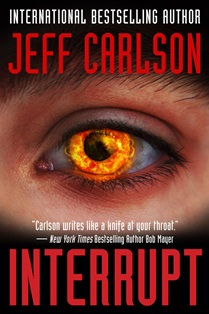
DLS Synopsis:
In Los Angeles, twenty-seven-year-old biologist, Dr Emily Flint, had just given the presentation that could well have ended her career had she followed her instincts and spoken out about the full possibilities of her research into autism. But suddenly none of that mattered when the sun started to emit massive electromagnetic pulses, turning almost the entire world’s population into either scared and incapable shells of their former selves or savage Neanderthal warriors – taking down anyone that they encounter.
Technology has pretty much been laid to waste under the devastating effects of the solar storms. Outside in the streets, people are lost in this new world and running around scared. However, amongst the desperate, a few are thriving in this collapsing environment. With their hard-wired minds wiped clean of their modern-day lives and reverted to their primitive roots – the Neanderthals are taking the world for their own.
Meanwhile, the senior astronomer at the Hoffman Square Kilometer Field, Marcus Wolsinger, has found himself trapped inside the towering satellite receivers located within the isolated high ground of Northern California. But with his seventeen-year-old son, Roell, caught outside the complex when the sun’s pulses reset everyone’s brains, the astronomer knows he has a tough decision to face.
Elsewhere, thirty-three-year-old Navy pilot and ROMEO agent, Lieutenant Commander Andrew Haldane, finds himself fearing for a nuclear attack from China when the Earth’s magnetic field was struck by the x-class solar flares, resulting in the sustained worldwide EMP. However, before the fighting can go too far between the two sides, an uneasy stand-off is met – with the realisation that the EMPs may not actually be a manmade affront.
However, after seeing her eight-year-old nephew, Peter Joshua (P.J.), leading a band of these Neanderthals through the streets of Los Angeles, Emily believes she may have an idea what is responsible in deciding who will turn Neanderthal. As she desperately tries to collect together whatever samples she can from those around her, the biologist is becoming increasingly convinced that she may just have uncovered a genetic timebomb that was just waiting to happen.
Around them all, the world is faced with a force that has lain dormant since the primitives walked the Earth. And in the blink of an eye humankind has found itself on the brink of utter collapse – the Neanderthals are the new warriors of the world – and those left clinging on to what’s left of mankind will need to hide and fight in order to survive the violence within the new world that has emerged...
DLS Review:
Jeff Carlson is certainly no stranger to writing post-apocalyptic fiction; after already having the likes of ‘Plague Year’ (2007), ‘Plague War’ (2008) and ‘Plague Zone’ (2009) under his belt. And it’s somewhat nice to see Carlson venturing outside of the standard run-of-the-mill premises in order to bring about his collapse of mankind.
That said, although Carlson’s novel utilises a very similar plot to that of Guy N Smith’s startlingly-original pulp novel ‘Throwback’ (1985), sadly Carlson’s offering lacks in any of the urgency and ‘get-stuck-in’ pace of Smith’s return to Neanderthals. Indeed, along with the post-apocalyptic-cum-primitive-man plot, Carlson interweaves a painfully dominant scientific foundation to the entire story that pretty much overwhelms any hope of a flowing pace. If you took Smith’s ‘Throwback’ and ramped up the elaborate explanation behind it all until the vast majority of the novel is bogged down with in-depth scientific mumbo-jumbo, then you’d be on your way to having an idea of what ‘Interrupt’ offers.
Not that utilising well-researched and intrinsic science behind a plot is a bad thing. Indeed, Simon Clark pulled off some outstanding novels which were rich in such science. However, where Clark kept the explanations in the likes of ‘King Blood’ (1997) or ‘Blood Crazy’ (1995) to a reasonably restrained level – not wanting to detract from the overall pace of the tale – Carlson has completely and utterly missed this (potentially) vital rule of thumb.
Okay, so not everyone’s going to mind such over-explanations constantly adding layer upon layer to the basis of the plot throughout the entirety of the tale. As with all novels – it’s a case of horses for courses. But how many figurative horses are going to enjoy this degree of a mind-numbing trudge through the veritable complexities of solar storms and our genetic past? I’m certainly not convinced.
Nevertheless, it isn’t all bad. With a tense chapter or two that are vaguely reminiscent of Carpenter’s ‘Assault On Precinct 13’ (1976), Carlson does manage to get some energy behind the spiralling Neanderthal madness that is supposedly taking place. And, like with the aforementioned scientific malarkey, these scenes are similarly laced with clever well-thought-through details that successfully paint them with a well-crafted brush of realism.
Sadly, characterisation is quite a haphazard affair throughout the novel. It’s hard to sympathise or really connect with any of the characters – even the handful who take the lead in the storyline. Each one seems only vaguely sketched out, their personalities left for the reader to fabricate how they see fit. And as such it doesn’t really work. To be honest, I found it hard to care if any or all of them popped their clogs at any given time. A situation that doesn’t help with keeping the reader gripped with the storyline.
The novel is what it is. Carlson’s clearly put a heck of a lot of time into researching the premise and creating a monumentally elaborate plot ingrained in entirely believable ‘Michael Crichton-esque’ science. But clearly a balance needs to be made between laying down a clever concept for a tale and delivering an entertaining and gripping story. And unfortunately Carlson’s novel has sacrificed too much of the actual entrainment-factor, unfortunately resulting in it just becoming an overly-tedious science-heavy-endurance-test.
The novel runs for a total of 460 pages.

© DLS Reviews






